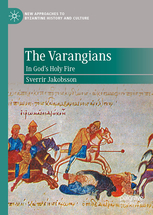In a hugely entertaining podcast, professor Sverrir Jakobsson discusses among other things the Varangians in culture. Grettis’ Saga is the perhaps the best example of a Varangian novel, whereas one of the most notable characters is Bolli from Laxdæla Saga. It turns out the Varangians rarely have to do anything to win respect in the Sagas, simply having been a Varangian is enough.
In a surprise turn of events, we also learn that the original Icelandic translation of Star Wars is based on the Sagas. One of the best known examples is Darth Vader’s moniker Svarthöfði (Blackhead) but the Jedi are also called Væringjar, which means … you guessed it … Varangians!
The podcast is episode 24 of Flimtan og fáryrði (Icelandic only):

